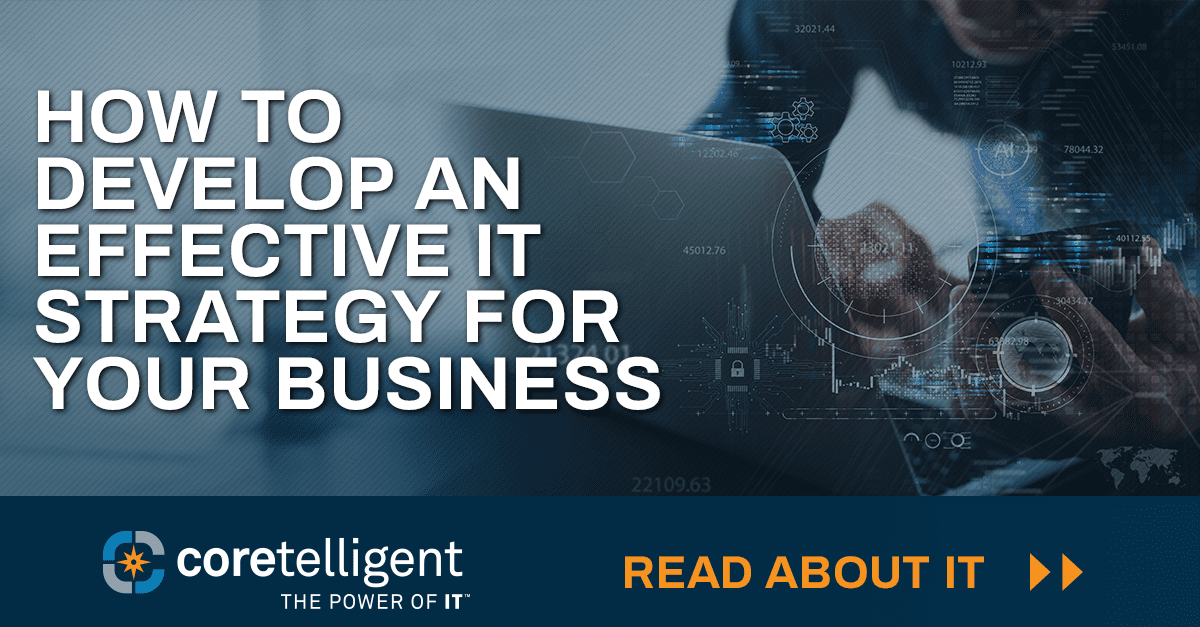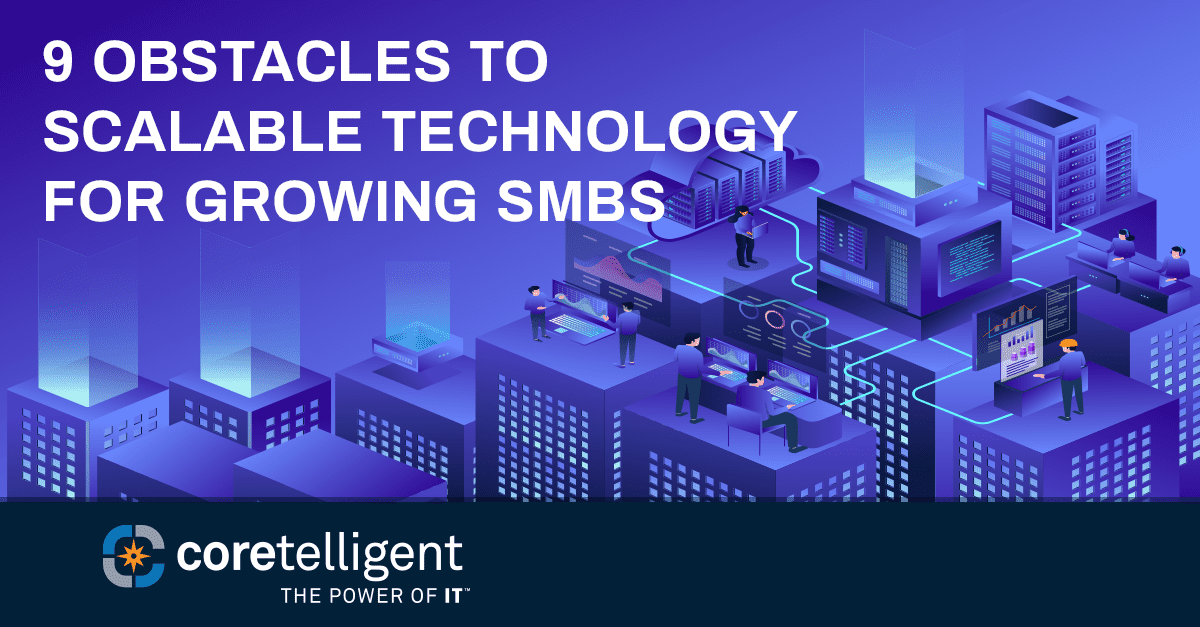Over the past few years, we’ve seen rapid technological changes, a trend set to continue in 2023. As a C-suite leader, it is vital that you are aware of the top IT priorities for this year and beyond. From ensuring robust security measures are implemented to accelerating digital transformation initiatives and managing costs effectively, executives must be prepared in this shifting environment.
7 Top IT Priorities for Executives in 2023
[ez-toc]

With the speed at which technology shifts the business landscape, it’s essential to remain ahead of the curve to make the most of technology investments. So here’s a look at seven of the most critical IT priorities for C-suite executives and tech leaders in 2023.
Cybersecurity
If current events are an indicator, cyber incidents will remain a top concern in 2023. There will be plenty of cybercriminal activity from the ongoing conflict in Ukraine, bank failures, a fluctuating economy, technological advancements, and other forces.
According to a recent poll, 34.5% of executives report that cybercriminals targeted their organizations’ financial data. And in that same poll, 48.8% expect the number and size of cyber events to increase in the year ahead.
With that in mind, it is essential for business leaders to continuously review and refine cybersecurity protocols. As the threats become more frequent and intense–from government-backed intrusions to heightened supply chain attacks–security specialists forecast an even more challenging 2023. To stay safe, organizations must remain vigilant and take active steps towards proper protection now.
Some key areas to consider strengthening are MFA, endpoint security and user awareness, zero trust policies, and better evaluation of partners’ and vendors’ security policies and practices by implementing a third-party risk management program.
Privacy and Compliance
Various privacy laws from a slew of agencies and organizations are getting updated or coming on board. As a result, experts anticipate that by the end of 2023, 75% of the world’s population will be covered by a complex network of data privacy regulations and increased enforcement of those laws. As a result, executives will need to allocate more resources toward security and compliance to mitigate risk and avoid costly data breaches and fines and penalties for non-compliance.
Automation with AI, ML, and Low Code/No-code
As we grapple with cybersecurity and compliance demands, resources must be made available for leveraging the potential of artificial intelligence, machine learning, and low-code/no-code solutions to optimize productivity and profitability by 2023.
These solutions are now considered mainstays for market relevance for many verticals, including financial services and life sciences. These technologies enable streamlining workflows and processes and recouping time spent on routine tasks for investment into revenue-boosting tasks. Coupled with personnel labor shortages, AI, ML, and low code/no-code will become integral to aligning IT strategy with business strategy.
Hybrid Workplace
CTOs, CISOs, and executives facing a hybrid model should continue to focus on applying best practices in their implementation. Undeniably, the hybrid model places additional burdens on IT resources, especially regarding cybersecurity and support. But with the right strategy, a hybrid workplace can offer an organization greater flexibility and efficiency. To this end, IT professionals should focus on solutions that enable secure, remote access and collaboration across different teams and offices.
Hiring and Staffing Challenges
Labor shortages in IT and IS will continue to be an issue. As the need to further invest in IT capabilities becomes necessary, many organizations struggle with filling vital roles within their IT departments. Numerous experts are warning that this talent void won’t dissipate anytime soon, so shrewd executives and technology professionals will look beyond internal resources by partnering with a Managed Service Provider (MSP) to supplement their existing capacities.
Emerging Technologies and Trends
And if increased cyber threats, compliance, and labor shortages are not enough to juggle, leaders must also keep up with what is on the horizon with 5G, quantum computing, and other emerging technologies.
5G will continue to transform the banking and financial sectors from improvements like increasing the speed of payments to creating environments for superior data collection and more efficient backend processes. Additionally, quantum computing will bring many challenges and opportunities, including protecting data from quantum-empowered cyber criminals. Working with a strategic IT partner can help executives determine what emerging technologies to invest in and prepare for in the future.
Cyber Insurance
As the rate, intensity, and cost of cybercrime rise, the cyber insurance market is growing more competitive. Many insurers are reevaluating their underwriting requirements and giving greater scrutiny to risk mitigation and security programs. From increasing costs to more reporting requirements, more consideration will need to be given to factoring these changes into your IT roadmap.
Planning and Strategy are Key
With careful planning and strategizing, CXO and IT leaders will be ready to take on these and other critical initiatives this year. With cybercrime and data breaches on the rise, allocating resources to cybersecurity and responding to shifting compliance standards is more important than ever. Automation with AI and ML can help improve workflows and increase productivity. Outsourcing some (or all in some cases) of your IT functions can help alleviate skill gaps and other challenges from labor shortages. Executives must also stay ahead of emerging technologies and changes to the cyber insurance landscape to ensure their businesses remain competitive. By preparing for these challenges, IT leaders can ensure their organizations achieve success this year and beyond.









 As we move into the last quarter of the year, it’s time for the annual review and realignment of your IT planning and strategy. Of course, you have actively been implementing your IT roadmap throughout the year, but a year-end IT planning and review is an opportunity to evaluate its effectiveness and update it for the upcoming year. Here are some things to keep in mind as you plan for the end of the year.
As we move into the last quarter of the year, it’s time for the annual review and realignment of your IT planning and strategy. Of course, you have actively been implementing your IT roadmap throughout the year, but a year-end IT planning and review is an opportunity to evaluate its effectiveness and update it for the upcoming year. Here are some things to keep in mind as you plan for the end of the year. About Chris
About Chris







 Scalable Technology is Mission Critical for Growth
Scalable Technology is Mission Critical for Growth About Chris
About Chris


